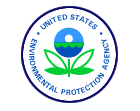
| National Risk Management Research Laboratory | ||

|
|
|||||||||
|
U.S. EPA Superfund Innovative Technology Evaluation
(SITE) Program This document
is available in the Adobe Acrobat PDF Format. Click here for information about Portable Document File (PDF) Formats. or Click here to directly download the Acrobat Reader. (To view the PDF, it is recommended that you use the latest version of Acrobat Reader.)
ZENON Environmental, Inc., Burlington, Ontario, Canada, developed a pervaporation process to remove volatile organic compounds (VOC) from contaminated water. The cross-flow pervaporation system features permeable membranes that preferentially adsorb VOCs, partitioning them from the contaminated water. Pervaporation can be applied to aqueous waste streams such as groundwater, lagoons, leachate, and rinse water contaminated with VOCs. Industrial waste streams may also be treated with this process, and solvents may be recovered for reuse. Contaminated water first passes through a heat exchanger, raising the water temperature. The heated water then enters the pervaporation module, which contains capillary-style membranes composed of a nonporous organophilic polymer, similar to silicone rubber. VOCs diffuse by vacuum from the membrane-water interface through the capillary wall. Treated water exits the pervaporation module, while the organic vapors travel from the module to a condenser where they cool to the liquid phase. The condensed organics represent only a fraction of the initial wastewater volume. Additional modules can be added to a particular system to treat greater volumes of water, as needed. In 1992, a pilot-plant was evaluated in-house at Wastewater Technology Centre (WTC), Ontario, Canada. The objective of the study was to determine the removal capacity of the system on VOC contaminated waste water. Results show that the system had high removal capacity, with VOC removals demonstrated to less than 5 parts per billion, or better than 99.99 percent reduction efficiency. A cost comparison performed in 1992 by WTC and ZENON showed that pervaporation can be competitive with air stripping and activated carbon to treat low VOC concentrations. Based on results from the Emerging Technology Program, the system was invited to participate in the SITE Demonstration Program. For further information on the full-scale system, refer to the profile in the Demonstration Program section (completed projects).
Posted October 1, 1999
|
|
|
|
|
|